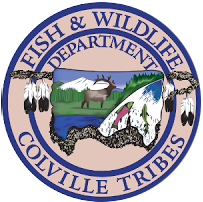Chief Joseph Hatchery Program
A New Hatchery Operating Under Hatchery Reform Principles
The Chief Joseph Hatchery (CJH) is the fourth hatchery obligated under the Grand Coulee Dam/Dry Falls project, originating in the 1940s. Leavenworth, Entiat, and Winthrop National Fish Hatcheries were built and operated as mitigation for salmon blockage at Grand Coulee Dam, but the fourth hatchery was not built and the obligation was nearly forgotten. Planning of the hatchery began in 2001, and it received its first broodstock in 2013.
The Chief Joseph Hatchery’s science and operating programs and designs are structured under integrated recommendations from the Congressional Hatchery Reform Project and recommendations from the Hatchery Science Review Group since planning began. A science-based and adaptive management approach was institutionalized at the first Steering Committee meeting.
The hatchery was also subject to review under the Northwest Power and Conservation Council’s (NPCC’s) 3-Step Master Plan process and from the Independent Scientific Review Panel. Accordingly, the project has defined objectives, operations, data collection protocols and analytical and reporting processes that span fish culture and research activities.
The primary objective of the Chief Joseph Hatchery (CJH) program is to meet trust obligations to the Colville Confederated Tribes for ceremony, subsistence, health and cultural purposes in a manner consistent with conservation of the natural fish populations. However, the CJH will also increase harvest opportunity for all anglers throughout the Columbia River, estuary, and Ocean. Additionally, the Colville Tribes and other salmon co-managers have worked with the mid-Columbia Public Utility Districts to meet some of their hydro-system mitigation through hatchery production at CJH. These are being implemented in a manner that restores the abundance and life history characteristics of the historical Okanogan River population of naturally-spawning salmon.
At full program the facility will rear up to 2 million summer/fall Chinook and 900,000 spring Chinook. The summer/fall Chinook program will have an integrated component for restoration and conservation purposes that meets high standards for natural origin fish composition on the spawning grounds.
If the natural population cannot support the integrated hatchery program in a given year, then hatchery production will be reduced or eliminated to minimize effects to the natural origin spawners. The segregated program will be a “stepping stone” program, striving to only use first generation returns from the integrated program and is targeted to provide increased harvest opportunity for all user groups.
The Spring Chinook program will also have two components, a segregated program at CJH and a reintroduction program in the Okanogan River. The segregated program will originate from unlisted Leavenworth stock spring Chinook.
The reintroduction program will utilize within-ESU origin spring Chinook from the Methow River under the ESA 10j “non-essential experimental” population designation. This is consistent with the Upper Columbia Spring Chinook Salmon and Steelhead Recovery Plan and the NPCC’s Fish and Wildlife Program, which included considerable input from regional stakeholders and regional experts. Research, monitoring and evaluation and data analysis is coupled with advanced hatchery fish culture, facilities and operational policies and are presented at an annual program review.
This practice has been underway since 2012, and will continue to guide the future actions and plans for the CJH program.
Chief Joseph Hatchery Juvenile Release Plan (2016-2020)
Table 1. Smolt release numbers from the Similkameen Pond program, before the Chief Joseph Hatchery Program (CJH), compared to recent and anticipated future smolt releases from the Chief Joseph Hatchery Program.
On average the Similkameen Pond used to release about 500,000 smolts (juvenile salmon) annually before CJH production began in 2013.
The last year before CJH production began there were only 158,000 smolts released.
2016 is the year this small release group returns to the Okanogan as adult salmon. Fishing for hatchery Chinook will not be good in 2016.
The wild returns are predicted to be fairly strong in 2016, so broodstock collection and natural spawning escapement should be good, which is important for future fisheries.
Beginning in 2017, adult salmon will return from the new CJH program's large smolt releases.
The CJH program will continue to release 2-4 times as many smolts as the previous program.
If ocean conditions remain favorable, the future outlook for harvestable hatchery Chinook is bright for the Upper Columbia in the long term.
Chief Joseph Hatchery Program Principles
Chief Joseph Hatchery Summer Chinook Monitor & Evaluation Plan
Chief Joseph Hatchery Spring Chinook Monitor & Evaluation Plan
Okanogan Subbasin Plan



